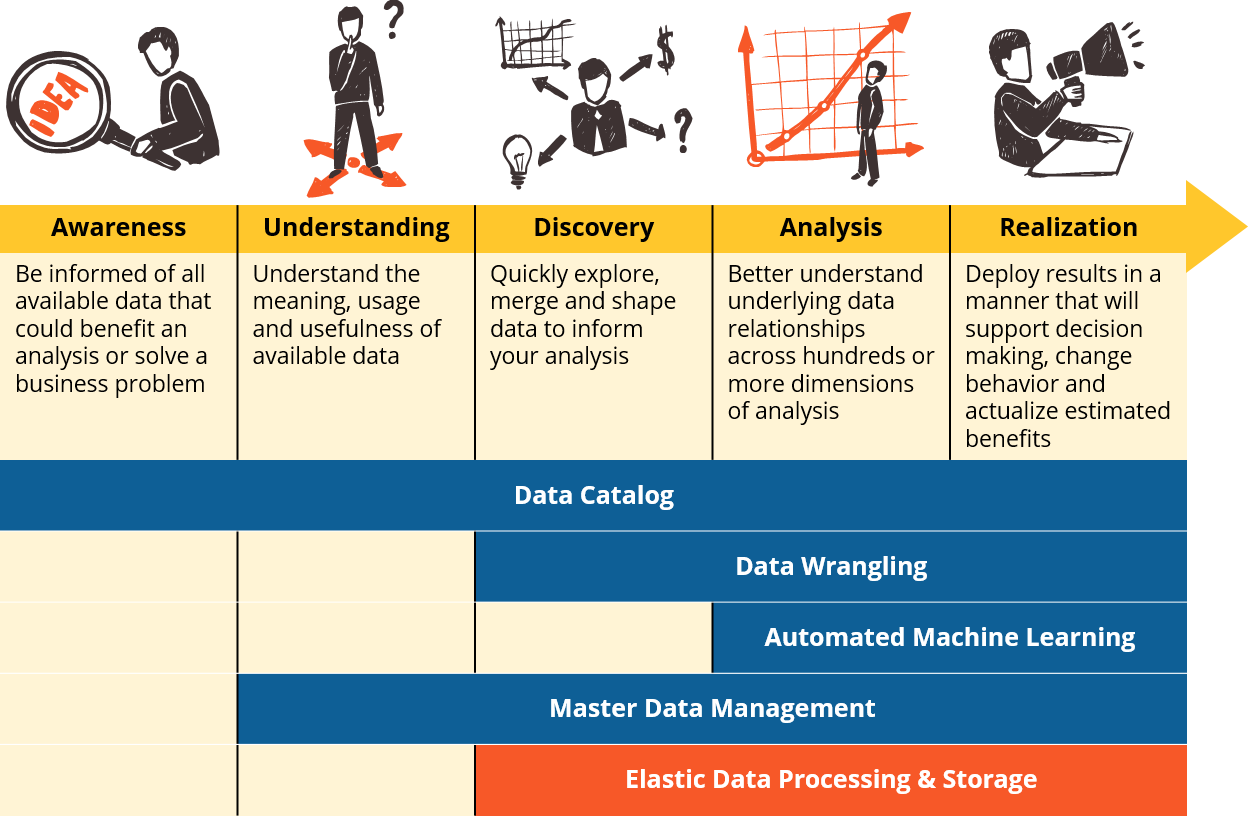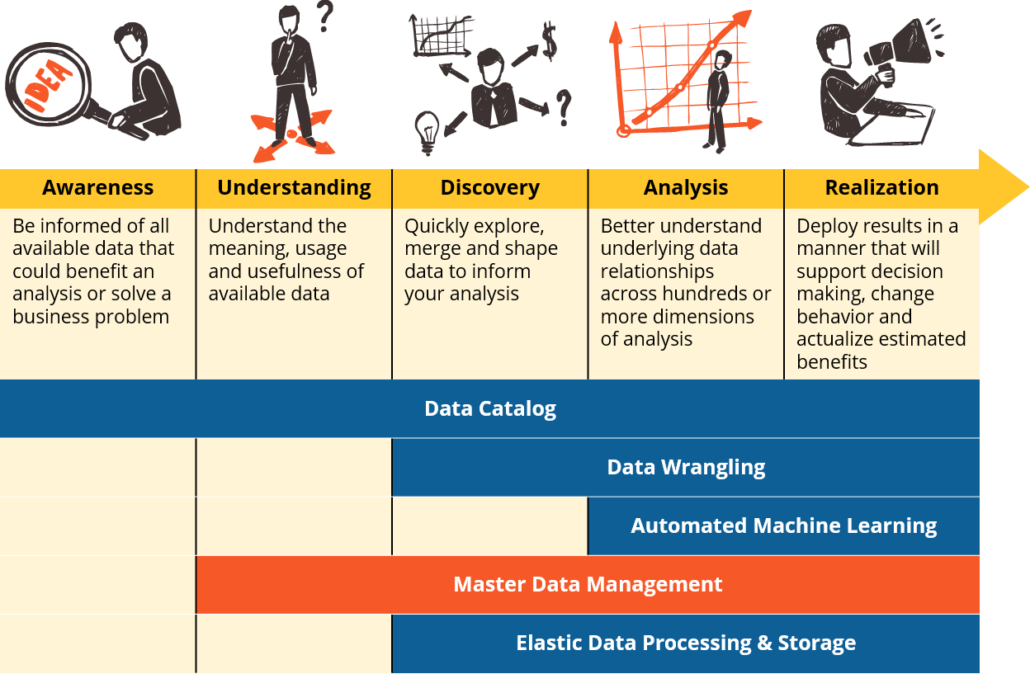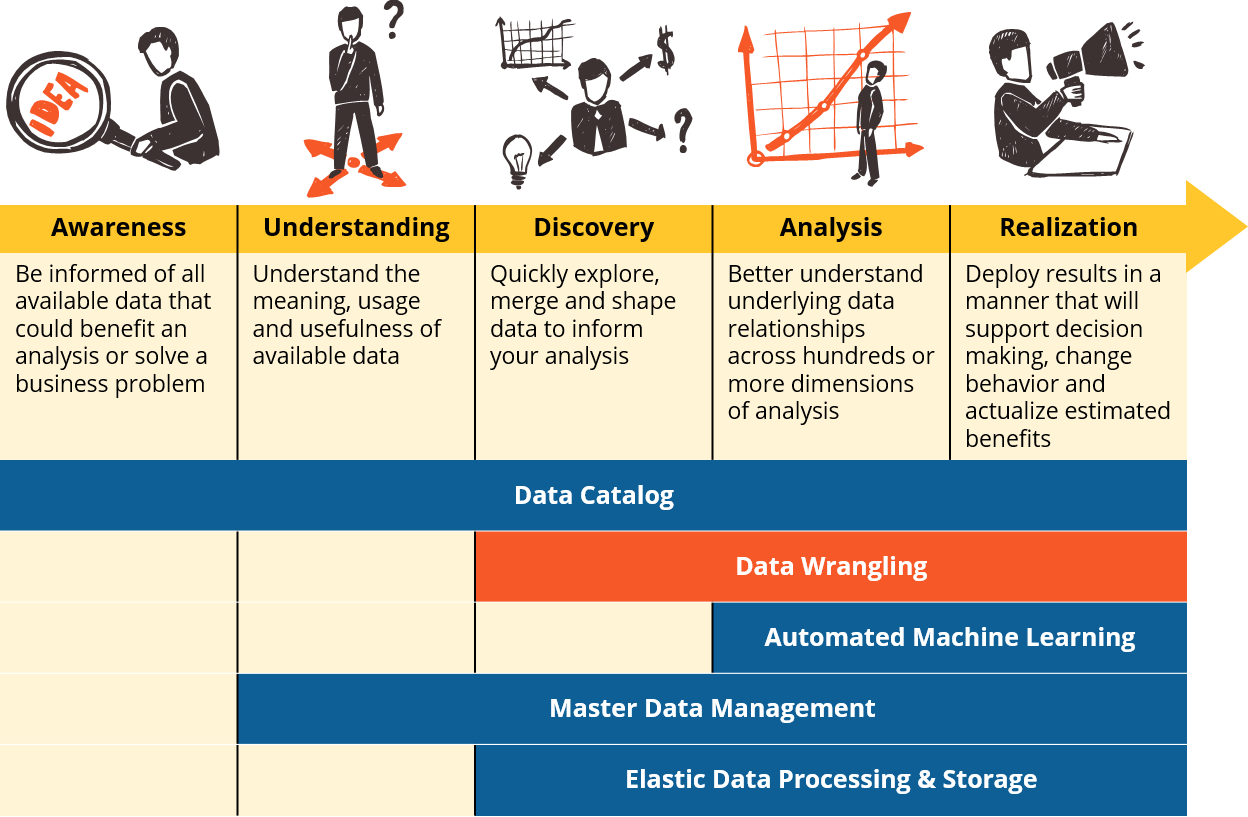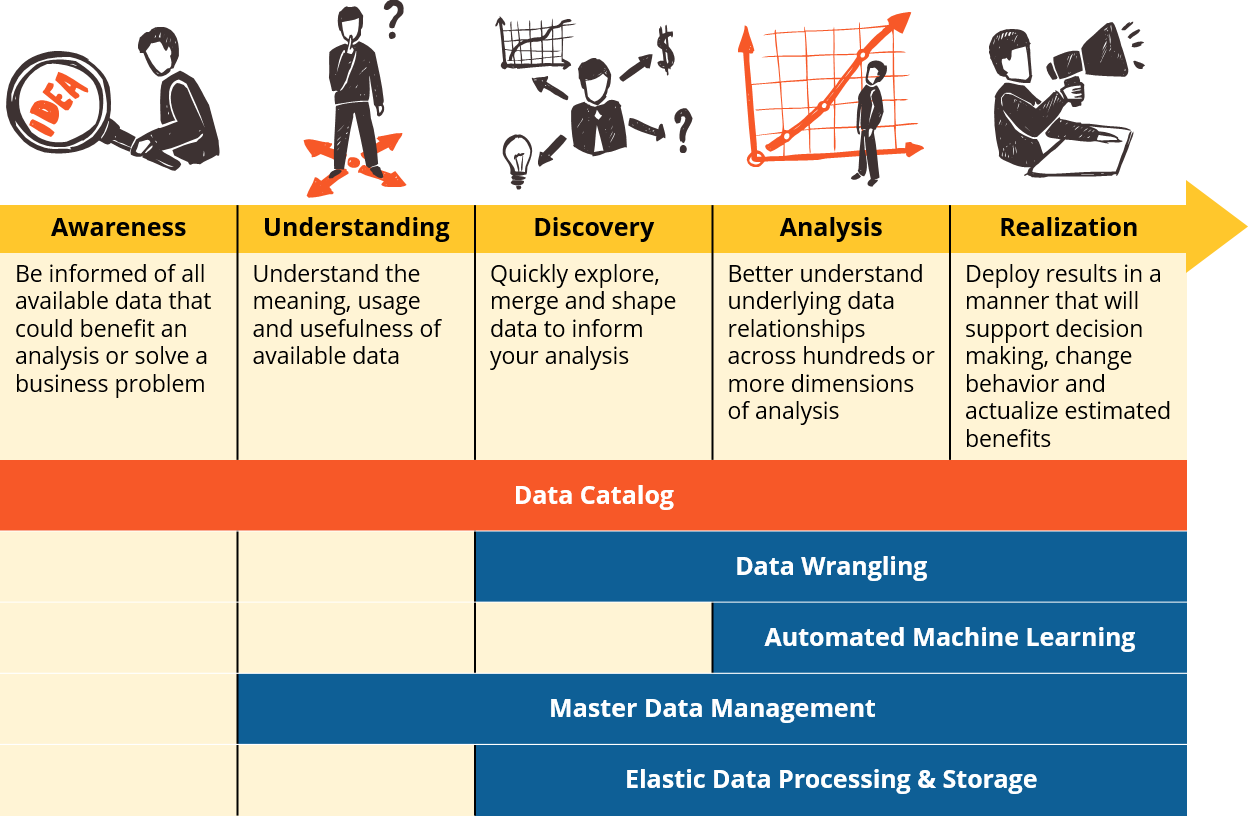Data democratization is the ability of an organization to provide information to end users in an easy and effective way. The goal is to provide self-service of information to end users with minimal IT support. There are many things that can go wrong when rolling out data democratization projects. The purpose of this article is to identify potential issues and provide guidance on how to avoid them in the democratization process.
Read moreWhen asked “What’s your data strategy?” do you reply “We’re getting Hadoop…” or “We just hired a data scientist…” or “If we only had a data lake, all our problems would be solved…”? Plotting a good data strategy requires more than buying a tool, hiring a resource, or adding a component to your architecture. You need something to describe:
- the goals you are trying to achieve,
- the stakeholders you are trying to serve, and
- the internal capabilities required to satisfy those stakeholders and achieve those goals
Is your company suffering from a case of “Bad Data”? Everyone is following the process and doing their job correctly but you still face issues with accurate reporting, operational errors, audit anxiety about your data, etc. Good data should be a given, right?
Well it’s not that easy. In today’s business environment, rapid growth, organizational change, and mergers and acquisitions (M&A) are very difficult to absorb within a fragmented data ecosystem. Multiple disparate IT systems, siloed databases, and deficient master data often result in data which is fragmented, duplicated and out of date.
Read more
Any discussion of Master Data Management automatically includes a discussion of Data Governance. The two go hand in hand. Successful MDM implementations require understanding data ownership, stewardship, and security, as well as determining business rules to be applied to the data. Specific business rules usually include rules for matching and consolidating data items as well as data quality checks. Read more
This is part five in our five part series on the essential capabilities of the competitive data-driven enterprise.

Over the last 20 years of doing business we have seen a number of different analytical data storage and query concepts fall in and out of favor. Throughout this time, a wave of digital transformation in business has dramatically increased the volume of collected data. Machine learning and other probabilistic methods benefit greatly from the law of large numbers so if by now it wasn’t already clear, all that talk about “big data” has really been about the analytics that it enables. As a result, today’s knowledge workers are predisposed to data hoarding, preferring to save everything including the data for which there are no known use cases, since its future value to the organization may still yet be discovered. Read more
This is part four in our five part series on the essential capabilities of the competitive data-driven enterprise.

Businesses have been deploying enterprise data governance (defining what the data should be) and master data management (ensuring the data is as defined) programs for decades. Even if your company doesn’t have a formal master data management program by name, chances are good that they are doing some form of master data management in your data warehouse, CRM or ERP systems. As the trend towards decentralized data analysis continues to progress we see a few forces in play that make the case for incorporating a master data management capability into your organizational roadmap: Read more
This is part two in our five part series on the essential capabilities of the competitive data-driven enterprise.

For decades, data integration and modeling have been done in either of two likely places: The enterprise ETL or Data Warehouse environment (IT Developers) or Excel (Analysts). Currently the status quo is being challenged in some of the following ways that highlight the importance of empowering domain and subject matter experts to wrangle and model their own data. Read more
This is part one in our five part series on the essential capabilities of the competitive data-driven enterprise.

The most common form of data-enabled business problem solving begins with a hypothesis around business drivers and relationships within the data. Typically, a well tenured business analyst will pull together the data they know about or have access to in their department and proceed to build their analysis. This standard approach assumes that: Read more
If your organization is seeking to better manage its information as a corporate asset that is to be valued and capitalized, you’re likely focused on implementing programs that will catalyze measurable business results from mountains of business information that may be the product of the last decade or more of digital transformation initiatives. Read more
One size does not fit all. Try as they might, there is not a single BI platform that can offer every capability that users require. With organizational complexity increasing, and the growing demand for self-service analytics, it has become commonplace, even recommended, for organizations to maintain multiple BI platforms to meet the needs of people in diverse roles with differing needs across the organization. Read more

